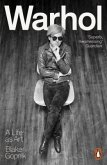It is a wonder why Gordon Matta-Clark is not better known. Born into the centre of the contemporary New York art world in 1942, Matta-Clark went on to study architecture at Cornell University before settling in the SoHo area of New York and becoming an artist. The nature of Matta-Clarks work was temporary, he worked in buildings scheduled for demolition. He would cut holes in these buildings, through the use of chainsaws and other power tools, opening them up to light and air and drawing attention to the speed of urban renewal taking place in America in the 1960's and 1970's. This book looks at the artists life and experiencesand the way in which these would ultimately influence his unique style of work. It is by looking at what influenced Matta-Clark, that enables us to understandwhy he held such a unique place in the 1970's New York art world, and why he is such an important figure in both art and architectural history. Matta-Clark belongs to no movement of art. Instead, he managed to blur the boundaries between art, architecture and sculpture.
Bitte wählen Sie Ihr Anliegen aus.
Rechnungen
Retourenschein anfordern
Bestellstatus
Storno








